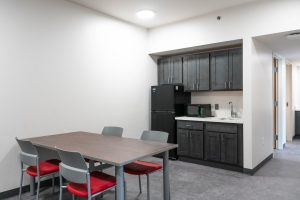Laube Delivers Laudable Organ Performance
November 2, 2012
The organ is often called the king of instruments, the most obvious reason being its massive size. Organist Nathan Laube’s recital last Tuesday evening in Finney Chapel demonstrated how fitting that lofty moniker is, even beyond sheer bulk.
A graduate of the Curtis Institute of Music, Laube is an accomplished musician. His immense respect for the music he performs was evident both in his playing and in his introductory remarks. Foregoing written program notes, he instead began the recital with a brief knowledgeable discussion of the pieces, explaining connections between them and highlighting each one’s specific aspects.
An organ recital is unlike any other type of concert, just as the instrument itself is unique. One diminutive person sits before a console, operating a machine that dwarfs the performer in size. Through the use of his or her feet, the performer can provide propulsive walking bass lines, as in the first piece Laube performed, the allegro vivace from Charles-Marie Widor’s Symphonie pour Grand Orgue, Op. 42, No.5. The assertive theme of this piece was subjected to whimsical variations, yet the gravity that comes from the strength of the organ’s sound and its association with churches rendered even the light sections solemn. The enhancing pops and clicks of pipes opening and closing while the song swelled to a grand conclusion served as a reminder that organs are truly machines.
In his transcription of Felix Mendelssohn’s Variations sérieuses, Op. 54, originally for piano, Laube brilliantly took advantage of another of the organ’s strengths: its wide range of timbres. Utilizing different pipes for distinct phrases, Laube transformed many of the variations into dialogues between different instruments. Following his rendition it was difficult to imagine this piece played on anything but an organ.
Joseph Jongen’s Sonata Eroice pour Grand Orgue, Op. 94 was another theme and variations that showed off the power of an organ. It began with a rambunctious introduction that led into the archaic theme, a Belgian carol. Through a wide variety of textures and timbres, Laube ensured that the memorable carol was always present. The piece contained the most fun moment of the recital, with a jaunty melody and raucously celebratory figurations.
The final piece was Maurice Duruflé’s Suite pour Orgue, Op. 5. The first movement was an eerie funeral march with a bagpipe-like drone that eventually subsided into resigned calm. The sicilienne conjured images of a magical landscape and mischievous elves with its lilting pastoral air. The suite ended in violence as dissonant chords and abrupt stops struck through the toccata.
After an hour of intense physical and mental effort by Mr. Laube, he chose a more calm piece for his encore: the andante sostenuto of Widor’s Symphonie pour Orgue, Op. 70, No. 9. The initial sweet melody was twisted into a plaintive lament in the middle section and then returned for a tranquil ending. The extreme contrast between this intimate piece and the grandiose earlier works, as well as all the variety and effort witnessed in the previous hour, left no doubt that the organ is indeed the king of instruments and Mr. Laube one of its supreme players.

























